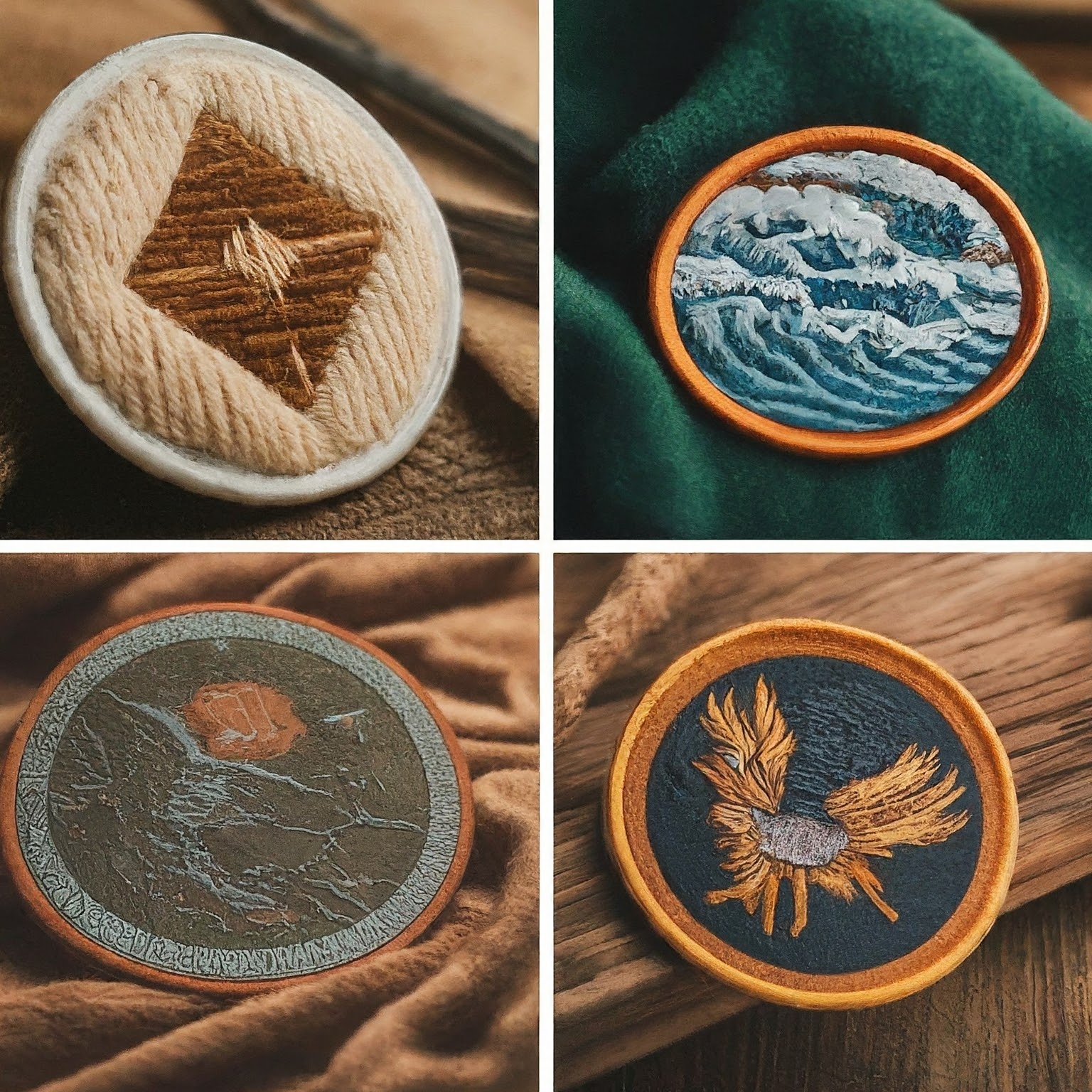Woven Patches vs Embroidered Patches: A Side-by-Side Comparison
Introduction:
Appearance:
Durability:
Versatility:
Cost:
Minimum Size:
Backing:
Choosing the Right Patch:
Additional Tips:
Conclusion:
Keywords:
woven patch, custom woven patch, high-quality woven patch, woven label, woven applique, flat patch, detailed patch, intricate patch, thin thread patch, lightweight patch, flexible patch, embroidered patch, custom embroidered patch, applique patch, raised patch, textured patch, bold patch, thick thread patch, durable patch, vibrant patch, uniforms, bags, hats, vests, jackets, jeans, backpacks, motorcycle jackets, sports teams, military, custom designs, iron-on patch, sew-on patch, clothing labels, crafts, decorations.
Introduction:
- Briefly introduce the popularity of patches for personalization and branding.
- Highlight the two main types: woven and embroidered.
- Briefly state the purpose of the guide: to compare and guide readers in choosing the right patch for their needs.
Appearance:
- Woven Patches:
- Flat, smooth surface with thin threads (flat patch, thin thread patch, lightweight patch).
- Intricate details possible due to the fine weave (detailed patch, intricate patch).
- Can be woven in various colors and patterns.
- Often used for clothing labels, uniforms, bags, hats, jackets, shirts, pants, dresses.
- Embroidered Patches:
- Textured surface with raised threads (textured patch, thick thread patch).
- Bolder colors and designs due to thicker threads.
- Limited detail compared to woven patches.
- Often used for uniforms, bags, hats, vests, jackets, jeans, backpacks, motorcycle jackets.
Durability:
- Woven Patches:
- Generally less durable than embroidered patches due to thinner threads.
- Still suitable for most applications with proper care.
- Embroidered Patches:
- Highly durable due to thick threads and base fabric.
- Ideal for heavy wear and tear.
Versatility:
- Woven Patches:
- Can be used on both the inside and outside of clothing (flexible patch).
- Lighter and more flexible than embroidered patches.
- Ideal for intricate designs and crafts, decorations.
- Embroidered Patches:
- More suitable for outer clothing due to their raised texture.
- Bolder and more vibrant, making them stand out.
- Good for simple designs and uniforms, sports teams, military.
Cost:
- Woven Patches:
- Typically cheaper than embroidered patches due to faster production and less material.
- Affordable option for custom woven patches and high-quality woven patches.
- Embroidered Patches:
- More expensive due to thicker threads and complex stitching.
Minimum Size:
- Woven Patches:
- Can be made smaller than embroidered patches due to the finer weave.
- Ideal for intricate designs and clothing labels.
- Embroidered Patches:
- Limited by the thickness of the threads, making them less suitable for very small designs.
Backing:
- Both types of patches can have different backing materials for additional stability, such as iron-on or sew-on.
- Choose the backing that best suits your application.
Choosing the Right Patch:
- Consider the desired appearance, durability, versatility, cost, and application.
- If you need intricate details and a flat surface, choose a woven patch.
- If you need boldness, durability, and a raised texture, choose an embroidered patch.
Additional Tips:
- Research different manufacturers and compare prices.
- Provide clear artwork for custom patches.
- Follow care instructions to ensure the longevity of your patch.
Conclusion:
- Both woven and embroidered patches have their own unique advantages and disadvantages.
- By understanding the key differences, you can choose the right type of patch for your specific needs.
Keywords:
woven patch, custom woven patch, high-quality woven patch, woven label, woven applique, flat patch, detailed patch, intricate patch, thin thread patch, lightweight patch, flexible patch, embroidered patch, custom embroidered patch, applique patch, raised patch, textured patch, bold patch, thick thread patch, durable patch, vibrant patch, uniforms, bags, hats, vests, jackets, jeans, backpacks, motorcycle jackets, sports teams, military, custom designs, iron-on patch, sew-on patch, clothing labels, crafts, decorations.

Comment